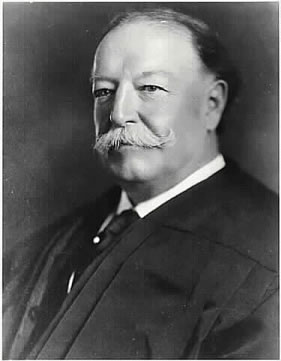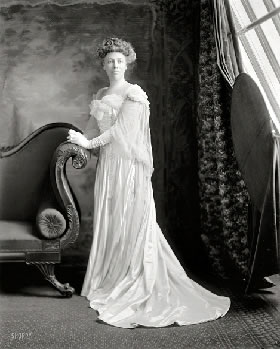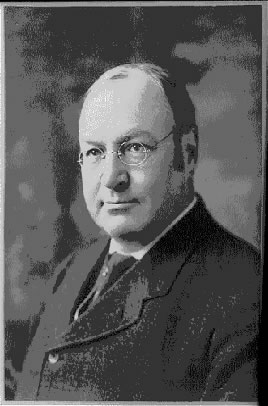William Howard Taft (September 15, 1857 – March 8, 1930) is the only person to serve as both president and chief justice of the United States. A gifted judge and administrator, Taft helped modernize the way the U.S. Supreme Court conducted its business and was the driving force behind the construction of the Supreme Court Building in Washington, D.C. Taft was born on September 15, 1857, in Cincinnati, Ohio. His father, Alphonso Taft, served as secretary of war and attorney general in President Ulysses S. Grant's administration. Taft graduated from Yale University in 1878 and earned a law degree from Cincinnati Law College (now University of Cincinnati College of Law) in 1880. He established a law practice in Cincinnati and served as prosecutor for Hamilton County, Ohio, from 1881 to 1882. Taft was assistant county solicitor from 1885 to 1887 and a superior court judge from 1887 to 1890. Though only thirty-three years old, Taft lobbied President Benjamin Harrison for a seat on the U.S. Supreme Court in 1890. Although Harrison demurred, he did make Taft U.S. solicitor general, the person who argues on behalf of the federal government before the Supreme Court. Taft won sixteen of the eighteen cases he argued before 1892, when Harrison appointed him to the U.S. Court of Appeals for the Sixth Circuit. The jurisdiction of the Sixth Circuit included Chicago and other industrialized cities of the Midwest, which were the scenes of conflict between laborunions and large manufacturing companies. Taft, like most conservative judges of his time, upheld the use of the labor injunction to prevent labor strikes and violence. The use of the injunction removed an important bargaining tool and seriously weakened labor unions. Taft, however, did believe workers had a right to organize and could legally strike, if the strike was peaceful. Taft left the court in 1900 at the request of President William McKinley. In the aftermath of the Spanish-American War (1898), the United States had taken possession of the Philippine Islands. Taft was chosen to lead a commission that would help establish a civil government in the islands and end military rule. In 1901 he became the first civilian governor of the Philippines and drew praise from the Philippine people for his administration. Taft reluctantly returned to Washington in 1904 at the request of President Theodore Roosevelt to become secretary of war. As secretary, Taft supervised the construction of the Panama Canal, established the U.S. Canal Zone, and helped negotiate a treaty that ended the Russo-Japanese War in 1905. When Roosevelt declined to run for another term in 1908, Taft was nominated as the Republican candidate. He easily defeated the Democratic candidate, William Jennings Bryan, in the general election and assumed office in 1909 as Roosevelt's political heir. Taft's administration proved to be lackluster at best, however. Though he was an able administrator, he lacked the political skills necessary to succeed in Washington. He alienated Roosevelt and other liberal Republicans by appeasing conservative Republicans, splitting the party in the process. Taft did carry on Roosevelt's "trust-busting" initiatives, attacking business trusts under the ShermanAnti-Trust Act (15 U.S.C.A. §1 et seq.) and supporting the Mann-Elkins Act of 1910 (49 U.S.C.A. §1 et seq.), which gave more power to the Interstate CommerceCommission. He also established the Department of Labor. In foreign affairs Taft adopted a policy of "dollar diplomacy" as an economic substitute for military aid to underdeveloped countries. Taft's political downfall began in 1910 with his support of Speaker of the House of Representatives Joseph Cannon, a conservative Republican who ran the House with an iron fist. Liberals had counted on Taft to help them break Cannon's power, but he refused. When Taft approved the development of Alaskan coal resources, he drew public criticism from Gifford A. Pinchot of the Forestry Service, a promoter of conservation and Roosevelt's close ally. In 1912 Roosevelt ran against Taft for the Republican presidential nomination. When Taft won the endorsement, Roosevelt formed the Progressive party, effectively guaranteeing that Democrat Woodrow Wilson would be elected president. Taft carried only Utah and Vermont and split the Republican vote with Roosevelt, allowing Wilson to win handily. After leaving the presidency, Taft became a law professor at Yale University. During World War I he served on the National War Labor Board and advocated the establishment of the League of Nations and U.S. participation in that world organization. In 1921 President Warren G. Harding appointed Taft chief justice of the United States. On a Court dominated by conservatives, Taft usually went along with his brethren in striking down laws that sought to regulate business and labor practices. Taft distinguished himself more as an administrator than as a judge. He developed and lobbied for the Judiciary Act of 1925, 43 Stat. 936, which gave the Court almost complete discretion over its docket. Under Taft the Court developed the writ of certiorari process, whereby a party files a petition seeking review by the Court. Because only a small fraction of these petitions are granted, the process has dramatically reduced the work of the Court. Taft also lobbied Congress for funds to construct a separate building for the Court. Although he did not live to see its completion, the Supreme Court Building, which was designed by Cass Gilbert, proved to be a lasting monument to Taft's administrative talents. Taft's health began to fail in 1928, and he was forced to resign from the Court in February 1930. He died on March 8, 1930, in Washington, D.C. |
 |
William Howard Taft Born: September 15, 1857
|
|
 |
|
First lady: Helen Herron Taft |
|
 |
|
Vice-president: James Schoolcraft Sherman |